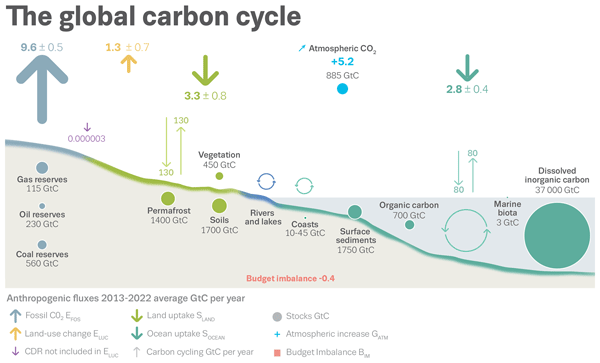
News and Media

NCEO significant contributions to Global Carbon Budget 2023

Published today as world leaders continue to meet in Dubai for COP28, the 2023 Global Carbon Budget report reveals the current state of the global carbon cycle and the implications for emission reductions in line with the Paris Agreement. Dedicated to constructing a comprehensive understanding of the worldwide carbon cycle, encompassing biophysical and anthropogenic dimensions, as well as the intricate feedback loops between these components.
‘Global efforts remain insufficient to reverse the growth in global fossil fuel emissions.’
The Global Carbon Budget report is produced by an international team of more than 120 scientists across 90 institutions around the world, including staff at NCEO. The report is the 18th of its kind to have been produced and offers new information on the continued reliance of fossil fuels globally outside of the remit. It has been reported that carbon dioxide is at a record high for 2023 with a projected rise of 1.1% since 2022 and 1.4% above the pre-COVID19 levels.
Emissions from land-use change are projected to decrease slightly but are still too high to be offset with current levels of afforestation and reforestation. It has been suggested our 2023 global emissions are part of a 10-year plateau – which is far from the steep emission reductions needed to meet global climate targets. Global efforts remain insufficient to reverse the growth of global fossil fuel emissions.
Contributions from NCEO scientists Prof Paul Palmer and Dr Liang Feng with their project GEOS-Chem, a 3-D chemical transport model (CTM) for atmospheric composition, and Prof Matthew Williams and Dr Luke Smallman with Cardamom, a carbon data model framework, have greatly supported this year’s Global Carbon Budget report. Their research directly helps us to decipher the underlying variability in the natural carbon cycle which is necessary to understand how carbon sinks respond to changes in climate. This further supports the quantification of emissions compatible with given climate stabilisation targets.
You can read more below.
Latest News and Events





